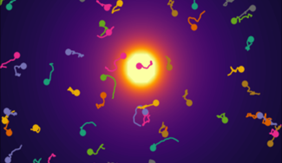Keywords
Biophysics, bacterial motility, chemotaxis, microbial ecology, encounter rates, numerical simulations
Description
Interactions between bacteria and phytoplankton cells constitute a major pathway for the flux of organic matter in the oceans, contributing to global biochemical cycles and control on atmospheric carbon. The ability of bacteria to swim and respond to chemical cues (a process known as chemotaxis) is recognized as a crucial driver of these interactions, but quantitative of the importance of these behaviours are lacking. We have developed a highly customizable package for simulations of bacterial motility and chemotaxis, to systematically how the behaviour and morphology of the participants affect these interactions, informing future modelling approaches. The student working on this proposal will design numerical experiments representing ecologically meaningful scenarios to understand the fundamental physical principles regulating bacteria-phytoplankton interactions.
Skills you will learn
• Physical modelling of biological systems
• Agent-based modelling
• Data analysis
• High-performance computing (ideally using the Julia language, but the student is free to choose different languages if they wish)
Goal
Perform agent-based simulations of bacteria-phytoplankton systems, investigating how different physical properties (bacterial speed, swimming strategy, phytoplankton shape and size…) modulate uptake and interaction rates. There is flexibility for the student to suggest complementary studies.
Project start
Anytime
Location
Environmental Microfluidics Laboratory, IfU, D-BAUG (ETH Zurich, Hoenggerberg campus)
Project type
This project can be adapted as a Master Thesis or Master Project.
Contact details
Riccardo Foffi: rfoffi@ethz.ch
Dr. Jonasz Słomka: slomka@ifu.baug.ethz.ch
